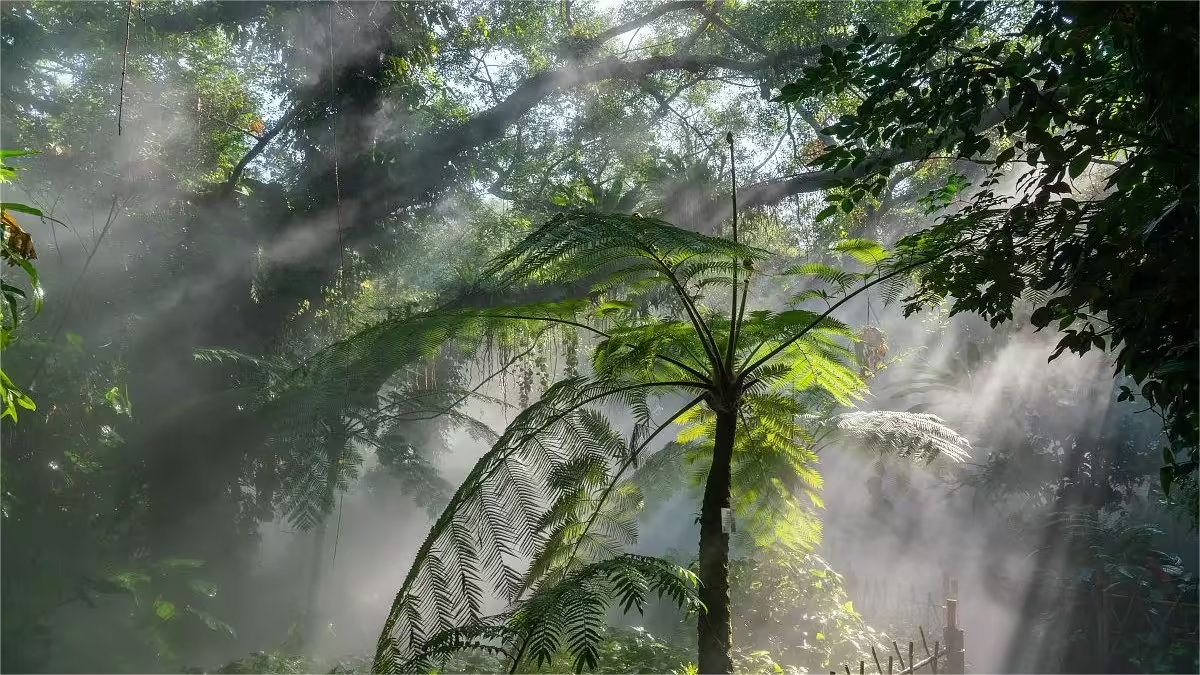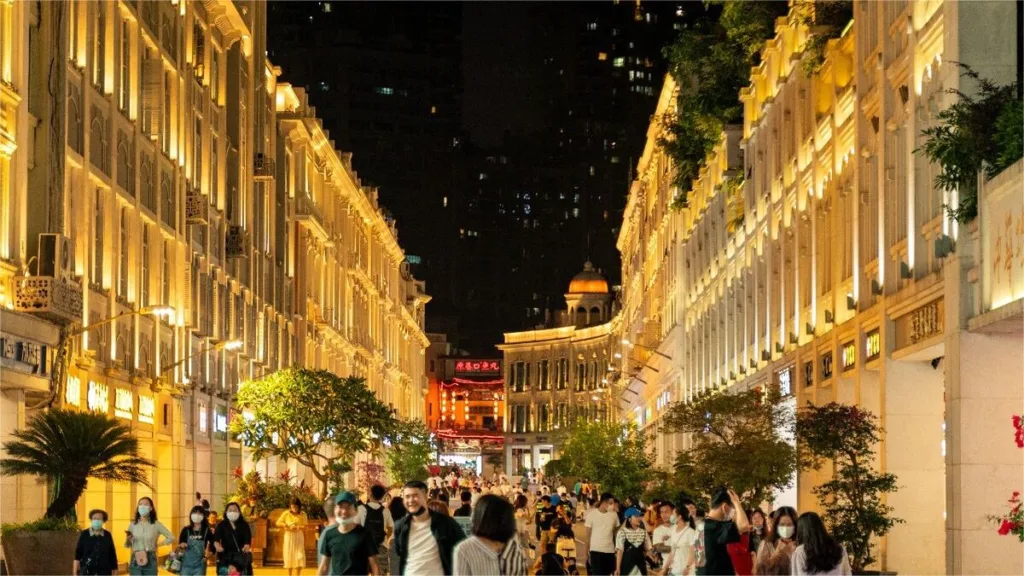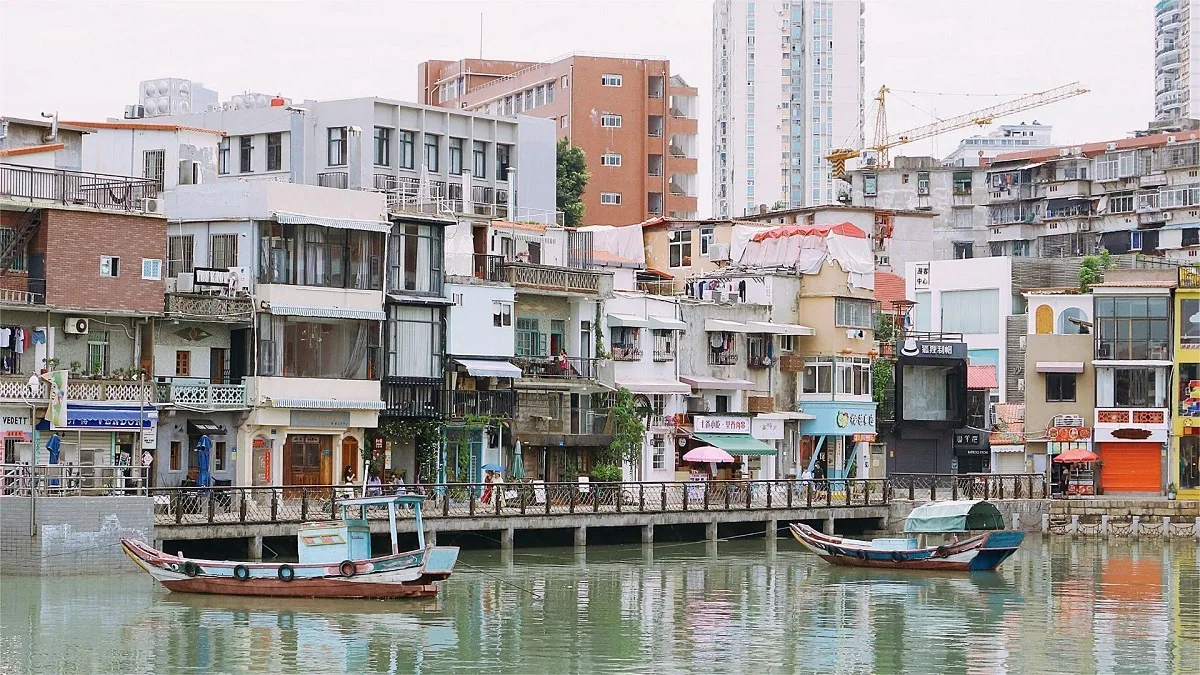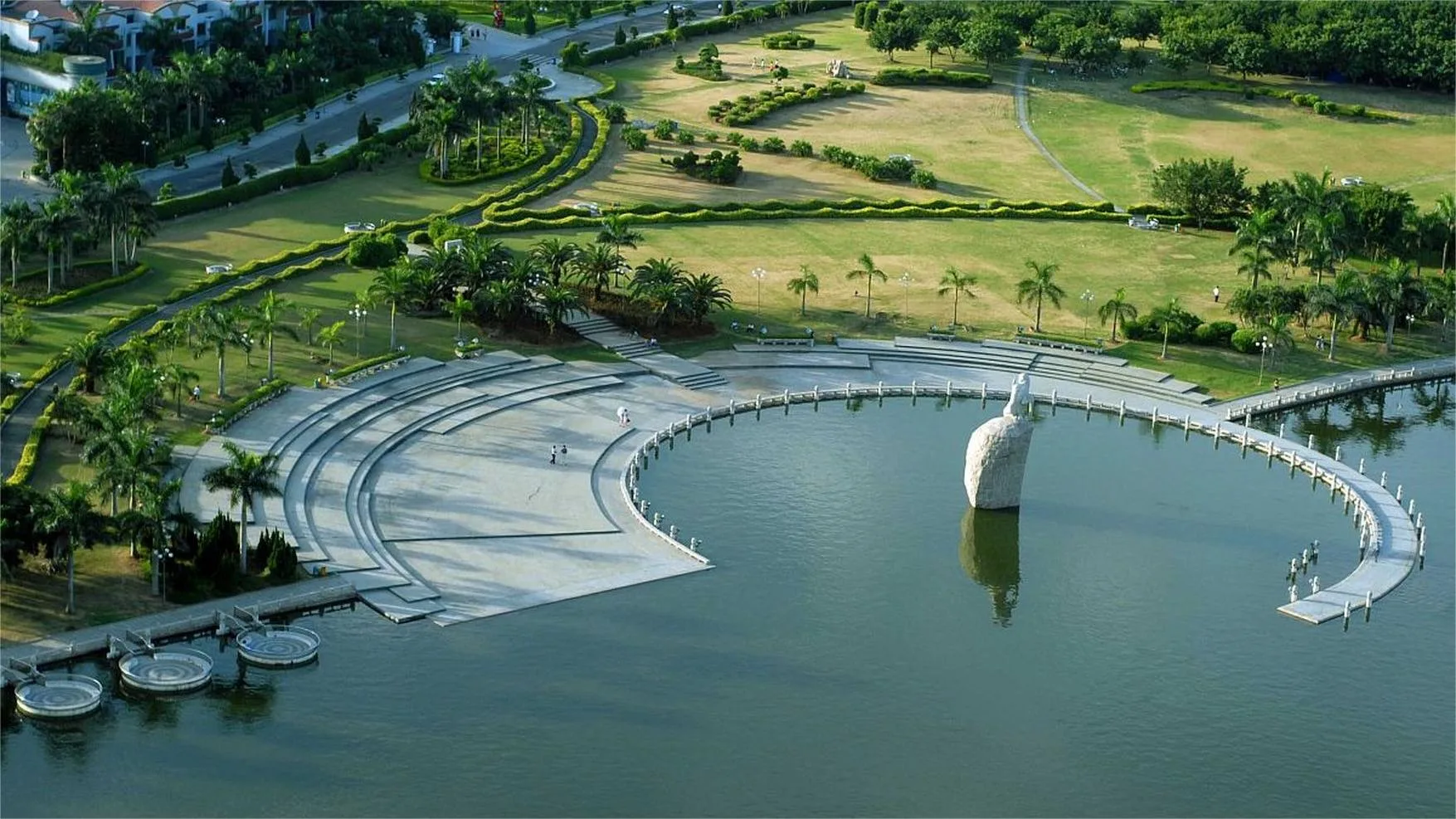Xiamen Botanical Garden (厦门植物园), commonly known as “Wanshi Botanical Garden (万石植物园),” was established in 1960 and spans an area of 4.93 square kilometers. It is the first botanical garden in Fujian Province, meticulously designed around the Wanshi Rock Reservoir. The garden features over 20 specialized sections and planting areas, including the Pine and Cypress Garden, Rose Garden, Palm Garden, Large Cactus Garden, Hundred Flowers Hall, and Orchid Nursery, cultivating more than 6,000 species of tropical and subtropical plants.
Among its many attractions, the Rainforest World and Succulent Plant Area are particularly noteworthy. Although Rainforest World is artificial, its misty atmosphere and beautiful tropical rainforest scenery create an enchanting, fairy-tale-like environment. The Succulent Plant Area showcases a variety of unique and oddly shaped cacti, offering a fascinating display of desert flora.
The climate of Xiamen Botanical Garden is characterized as subtropical monsoon, with hot, rainy summers and mild, humid winters. The average annual temperature is 21.2°C, with the coldest month (February) averaging above 12°C, and the hottest months (July to August) averaging 28°C, ensuring there is no true winter season. The garden receives approximately 1513 millimeters of rainfall annually, primarily from March to June, with occasional typhoons from July to September. The average annual humidity is around 76%.
Table of Contents
- Basic Information
- Location and Transportation
- Highlights of Xiamen Botanical Garden
- Vlog about Xiamen Botanical Garden
- Attractions near Xiamen Botanical Garden
Basic Information
| Estimated Length of Tour | 2 – 3 hours |
| Ticket Price | 30 RMB |
| Opening Hours | 6.30 – 18.00 |
| Telephone Number | 0086-0592-2985935 |
Location and Transportation
Xiamen Botanical Garden is located at 25 Huyuan Road, Siming District, Xiamen, Fujian Province. It is nestled at the base of Wulao Peak and is in close proximity to Nanputuo Temple and Xiamen University. The garden is also conveniently near the bustling Zhongshan Road commercial area. To get there, you can choose one of the following ways:
Bus: Take bus 32, 87, 100, 309, B11, B3, B5, J103, or M30 and get off at Botanical Garden Stop (植物园站).
Metro: The closest metro station to Xiamen Botanical Garden is Zhongshan Park (中山公园) on line 1. After getting out of the station, walk about 450 meters to the east to reach the site.
Highlights of Xiamen Botanical Garden
Pine and Cypress Garden

The Pine and Cypress Garden is located to the west of Wanshi Lake. The garden features a small pond with a pavilion named Pine Crane Pavilion nearby. Across from the pavilion, a rock is inscribed with the characters “Pine Crane Garden.” Within the pond are five lifelike statues of white cranes in various poses: some poised for flight, some standing in the water observing, some feeding, and others resting. The garden is home to seventy to eighty species of pines, cypresses, and related trees. Notably, it includes ancient relict species such as the dawn redwood and the ginkgo, which date back to the Ice Age 2 million years ago and are often called “living fossils.”
Additionally, the garden boasts the world’s four major ornamental trees: the Chinese golden larch, the Japanese black pine, the Norfolk Island pine, and the Italian cypress. These trees are renowned for their elegant shapes and are admired as scenic trees. Behind the Pine and Cypress Garden stands a redwood tree gifted by former U.S. President Richard Nixon during his visit to China, as well as a Chilean pine. The garden also features the remarkable “Victoria Water Lily” in a beautiful lotus pond. The leaves of this lily can reach a diameter of 2 meters, with edges curving upwards by 20 centimeters. These leaves can support over 70 kilograms, making it possible for children to sit on them – a truly delightful sight.
Palm Garden
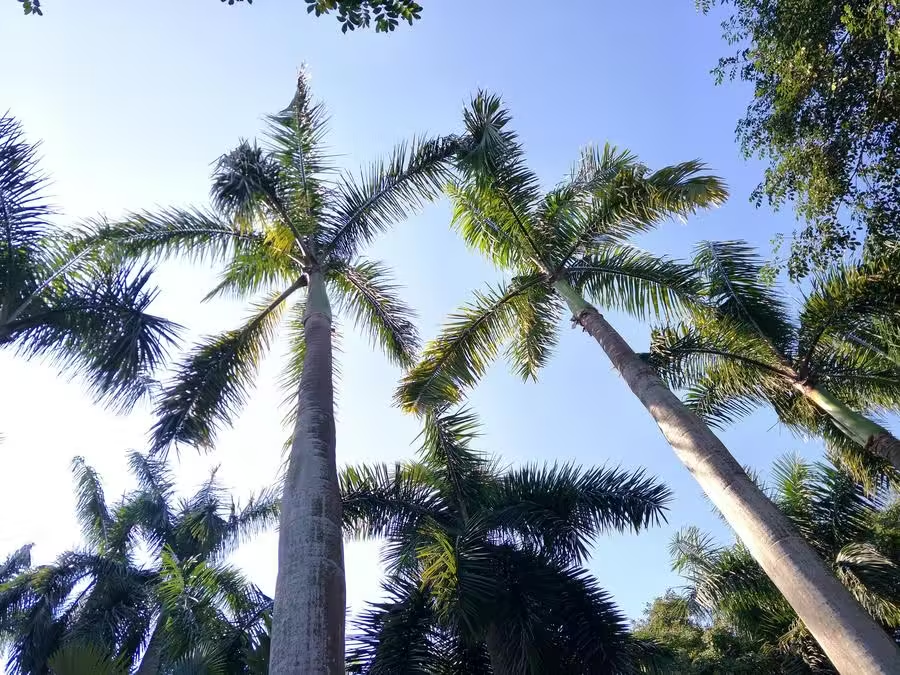
The Palm Garden, situated above Wanshi Lake and also known as Palm Island, is named for its extensive collection of palm trees. This area hosts sixty to seventy species of exotic trees, including the “beauty of the forest” lemon-scented gum, fishtail palms, fan palms, Italian palms, West Indian palms, royal palms, the “king of oil” oil palm, and the Indonesian sugar palm. These palms not only enhance the garden’s beauty but also possess significant economic value.
Xiamen Botanical Garden’s diverse plant collections, combined with its unique microclimate and carefully curated landscapes, make it a must-visit destination for nature enthusiasts and tourists alike. Whether you are exploring the ancient and rare trees in the Pine and Cypress Garden or marveling at the exotic palms in the Palm Garden, this botanical haven offers an immersive experience in the rich botanical diversity of southern China.
Cactus World

Cactus World is located halfway up the mountain along the scenic mountain road and covers an area of 40,000 square meters. The main exhibition area includes both outdoor sections and an exhibition greenhouse. The outdoor section features grand displays of large succulent plants and cacti, marking the first large-scale outdoor cactus landscaping project in China. Among the remarkable plants here are bottle trees imported from Australia, which resemble giant bottles, and other impressive species such as the elephant tree, ponytail palm, pandanus, and various cacti.
The exhibition greenhouse in Cactus World is a stunning display of diverse cacti and succulent plants. It houses China’s largest cultivated golden barrel cactus, known as the “King of Golden Barrels,” which has won numerous awards at events like the China Flower Expo, Hong Kong Flower Show, and Kunming International Horticultural Exposition. The greenhouse also features rare species such as the ghost cactus, Godzilla cactus, turtle-patterned kapok, purple vine, and the columnar cactus, along with small potted succulents like Lithops and Crassula from South Africa.
Succulent Plant Exhibition Hall
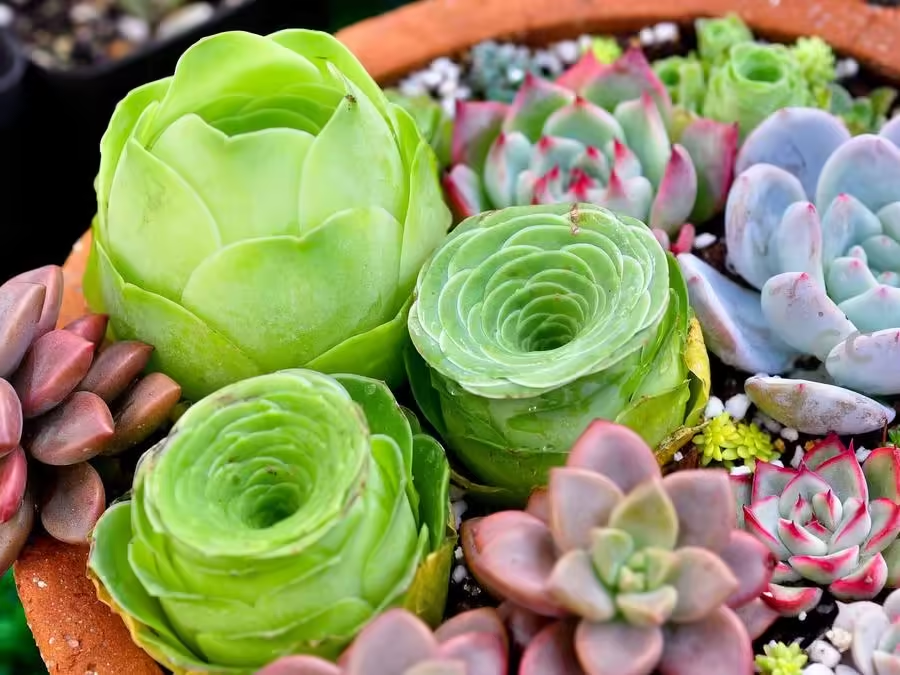
The Succulent Plant Exhibition Hall is located to the left of Ziyun Rock and is designed to resemble a giant transparent spiral shell. This hall showcases a variety of potted cacti and succulents, including cacti, columnar cacti, and cactus wands. The standout specimen in this hall is the “Golden Barrel Cactus,” which has been growing for over 30 years and boasts a diameter of over 90 centimeters, earning it the title “King of Cacti.” The columnar cacti in this hall can reach up to three meters in height, making them a rare sight.
Xiamen Botanical Garden is home to over 500 species of cacti, the highest number in China, making it a premier destination for cactus enthusiasts. Cacti are not only valued for their ornamental appeal but also for their medicinal, economic, and research significance. They serve as important specimens for studying plant taxonomy and evolution.
Rose Garden
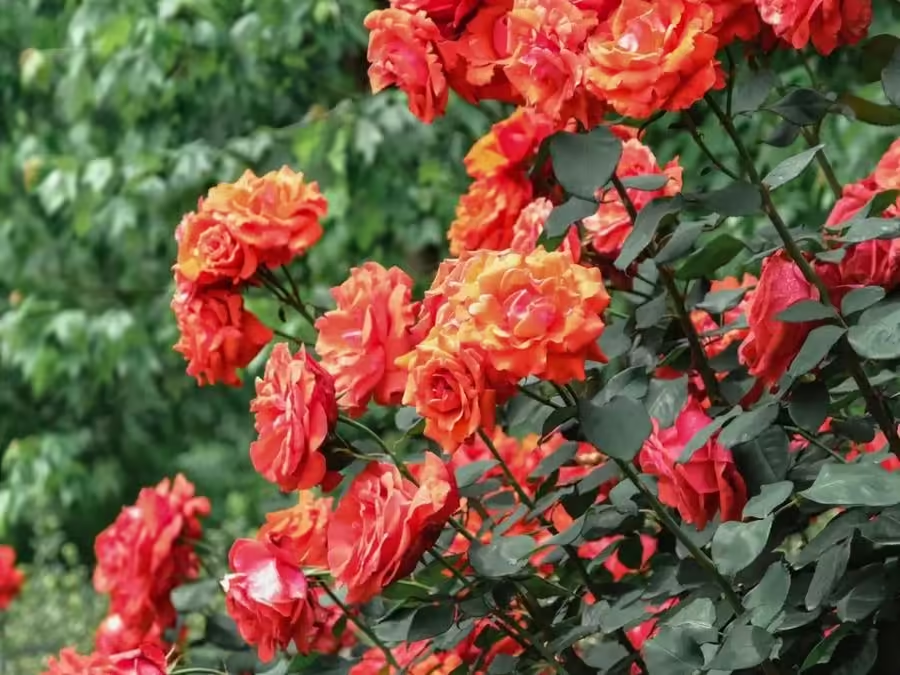
The Rose Garden, situated between Palm Island and Wanshi Lotus Temple, was established in 1995. It is a dedicated area for Rosaceae plants, including attractions like “Elephant Trunk Peak” and “Ten Thousand Officials Facing the Sky.” The garden features vast lawns, making it a popular spot for visitors, especially during holidays. In addition to roses and Chinese roses, the garden also cultivates plum blossoms, peach blossoms, firethorns, spireas, and quinces.
“Ten Thousand Officials Facing the Sky” is one of the Eight Small Scenic Spots of Xiamen’s historical Twenty-Four Views. In the past, Wanshi Mountain had no large-scale tree planting, and from a distance, the overlapping rocks resembled officials holding ceremonial tablets, hence the name. “Elephant Trunk Peak” is formed by two stones with a narrow gap, resembling an elephant’s trunk. The peak’s name is inscribed on the stone, a contribution by Li Zhang, an official during the Yongzheng period of the Qing Dynasty.
Rainforest World

Rainforest World is located within the Ziyun Scenic Area, covering approximately 16 hectares. One of the garden’s two main water systems, Qiaoxi Stream, flows through this area. It includes historical spots like “Ziyun Get Road” and “Gao Du Qin Cave” from Xiamen’s old Twenty-Four Views, and the Qiaoxi Bridge, a cultural relic built during the Ming Dynasty’s Wanli period.
Rainforest World features a wide array of rainforest plants, characterized by large buttress roots, drip-tip leaves, flowers growing directly on trunks, strangling phenomena, and epiphytes. This section of the garden creates an immersive experience with its lush vegetation and misty atmosphere, offering visitors a glimpse into the complex and diverse ecosystem of tropical rainforests.

